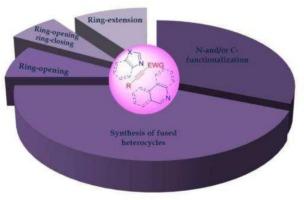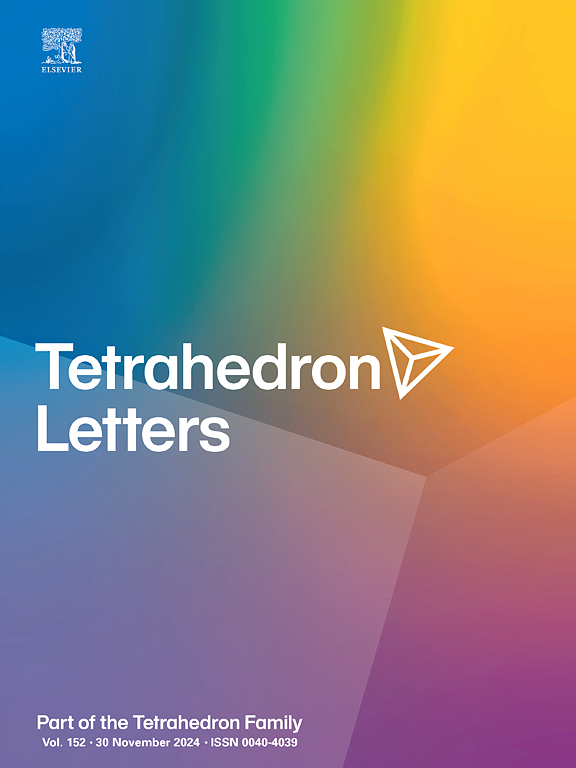亲电乙炔引发和驱动的氮杂环过渡金属游离功能化
IF 1.5
4区 化学
Q3 CHEMISTRY, ORGANIC
引用次数: 0
摘要
综述了近五年来在无过渡金属功能化和亲电乙炔修饰氮杂环方面取得的进展。这些反应是由最初形成的1,3(4)-偶极配合物(两性离子)引发并进一步驱动的,这是氮杂环在乙炔的三亲电碳-碳键上亲核攻击的加合物。这些两性离子的碳离子位点通常被亲电试剂捕获,如乙炔的第二分子或其他亲电的CC和CO不饱和化合物,以及各种CH, OH, NH, PH酸,从而将分子复杂性(在不同的级联转化过程中)提高到一个新的更高水平。活性炭-碳三键丰富的能量潜力保证了温和的反应条件,并允许在没有过渡金属催化剂的情况下进行功能化。本文章由计算机程序翻译,如有差异,请以英文原文为准。

Transition metal free functionalization of nitrogen heterocycles, triggered and driven by electrophilic acetylenes
The review covers the advances reached during the last five years in transition metal free functionalization and modification of nitrogen heterocycles with electrophilic acetylenes. The reactions are triggered and further driven by the initially formed 1,3(4)-dipole complexes (zwitterions), adducts of the nucleophilic attack of nitrogen heterocycles at the triple electrophilic carbon‑carbon bond of the acetylenes. The carbanionic sites of these zwitterions are usually captured by electrophiles such as second molecule of the acetylenes or other electrophilic C![]() C and C
C and C![]() O unsaturated compounds, as well as various CH
O unsaturated compounds, as well as various CH![]() , OH
, OH![]() , NH
, NH![]() , PH
, PH![]() acids thereby raising molecular complexity (in the course of diverse cascade transformations) to a new higher level. The rich energy potential of the activated carbon‑carbon triple bond warrants mild reaction conditions and allows the functionalization to be performed without transition metal catalysts.
acids thereby raising molecular complexity (in the course of diverse cascade transformations) to a new higher level. The rich energy potential of the activated carbon‑carbon triple bond warrants mild reaction conditions and allows the functionalization to be performed without transition metal catalysts.
求助全文
通过发布文献求助,成功后即可免费获取论文全文。
去求助
来源期刊

Tetrahedron Letters
化学-有机化学
CiteScore
3.50
自引率
5.60%
发文量
521
审稿时长
28 days
期刊介绍:
Tetrahedron Letters provides maximum dissemination of outstanding developments in organic chemistry. The journal is published weekly and covers developments in techniques, structures, methods and conclusions in experimental and theoretical organic chemistry. Rapid publication of timely and significant research results enables researchers from all over the world to transmit quickly their new contributions to large, international audiences.
 求助内容:
求助内容: 应助结果提醒方式:
应助结果提醒方式:


